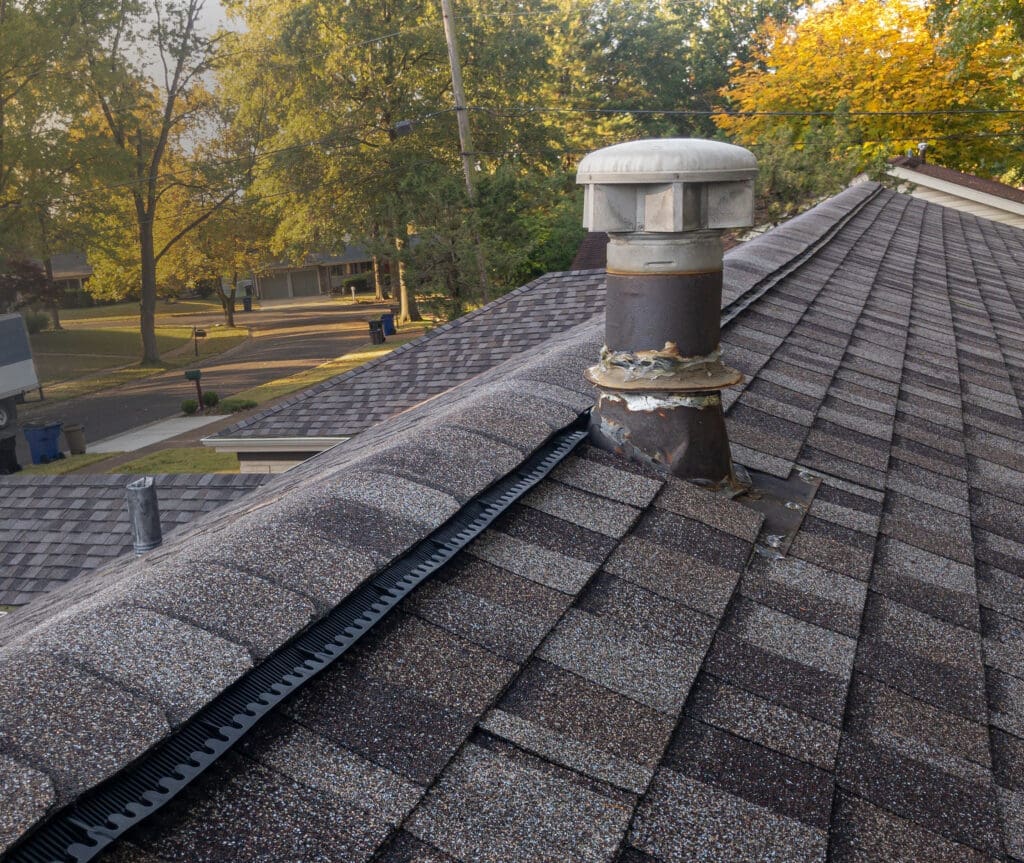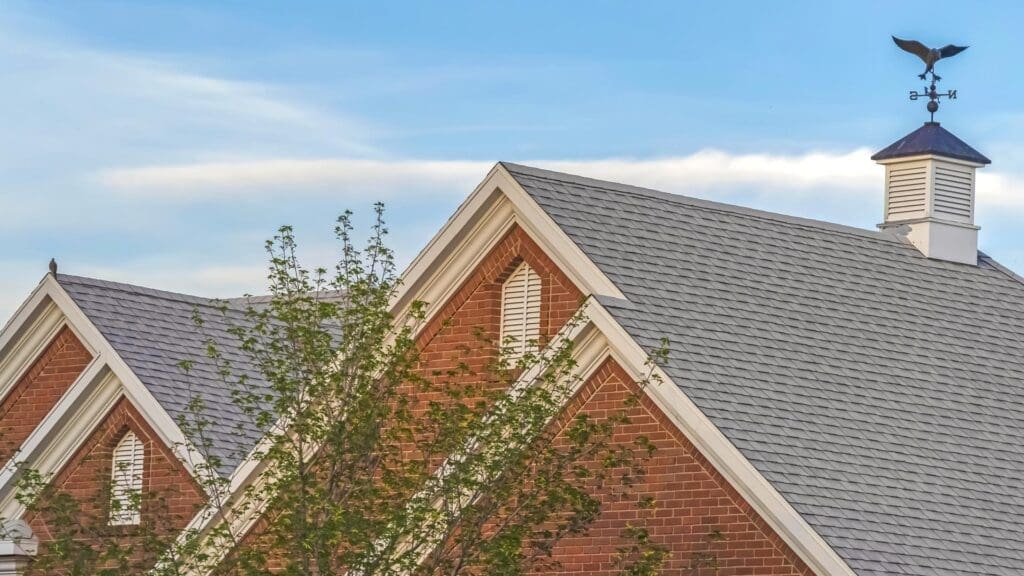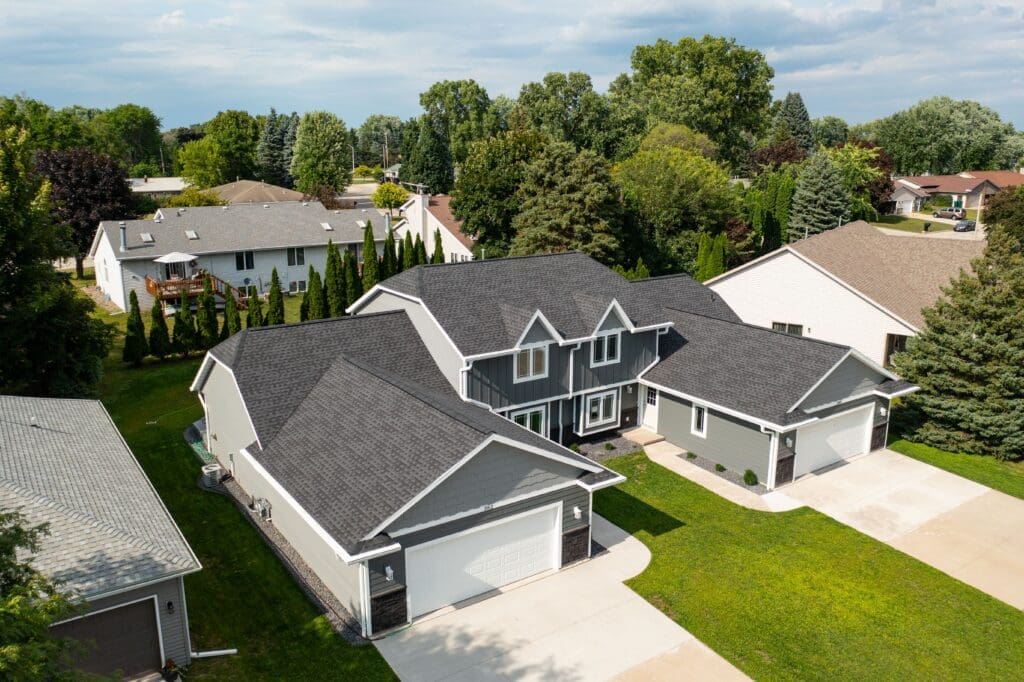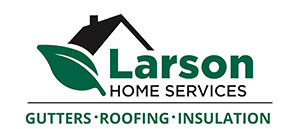Ridge Vents & Attic Ventilation Installation & Repair in Madison, WI & Rochester, MN
What Is Attic Ventilation?
If your home traps heat in the summer or struggles with ice dams in the winter, poor attic airflow may be to blame. As a trusted attic ventilation specialist in Madison and Rochester, Larson Home Services helps homeowners protect their roofs, lower energy bills, and prevent costly moisture damage with properly designed ventilation systems.
Attic ventilation works by allowing fresh outdoor air to enter through intake vents, such as soffits, and letting warm, moist air escape through exhaust vents, like ridge or box vents. When balanced correctly, this continuous airflow regulates attic temperature and humidity throughout the year.
Without it, heat and moisture build up inside your attic, leading to premature roof wear, higher cooling costs, and potential mold growth in your insulation or framing.


Types of Attic Ventilation
There are two main types of attic ventilation systems: passive and active. Each one moves air a little differently, and the right fit depends on your home’s roof design, your local climate, and how energy-efficient you want things to be.
Below, we’ve broken down the most common options homeowners and roofing pros use to keep attics cool, dry, and well-ventilated.
Active vs. Passive Ventilation
Attic ventilation systems can be categorized into two types: passive and active. Passive ventilation relies on natural airflow through vents, such as soffits, ridges, or gables, while active systems use electric or solar-powered fans to push air out.
A simple way to understand the difference is to think of cooling down a room. Passive is like opening windows to let the breeze come in, while active is like turning on a fan when the breeze isn’t enough.
Ridge vents run right along the peak of your roof and offer steady, low-profile airflow that doesn’t change the look of your home. When paired with intake vents, such as soffits, they create a balanced system that keeps your attic well-ventilated all year long. They’re especially helpful in colder climates like Wisconsin and Minnesota, where ice dams and trapped moisture can do real damage if airflow isn’t handled correctly.
Tucked under the eaves of your roof, soffit vents let cool outdoor air flow into the attic and help push out hot, stale air through ridge or box vents. If these get blocked or if there’s old insulation packed too tightly around them, your attic can’t breathe, and you may start to see moisture problems or stuffy air. If this sounds familiar, it might be time to call an attic ventilation specialist. We can take a look and make sure everything’s working as it should.
Gable vents are the classic triangle-shaped vents you’ve probably seen near the top of older homes. They let warm air escape from the sides of your attic, which can give your ventilation system an extra boost. Just keep in mind that without the proper intake vents, gable vents can actually disrupt your airflow.
Powered ventilators (also known as “attic fans”) utilize electricity or solar energy to quickly pull hot air out. They’re great for large homes or complicated rooflines where passive airflow simply isn’t enough. Many even come with built-in thermostats or humidity sensors that automatically activate.
But they do need to be installed carefully. If they’re not set up right, they can pull cool air from inside your home instead of just venting the attic. That’s why we always do a complete roof evaluation before recommending one.
These are the little spinning vents you see on some rooftops. Powered by wind, they create suction that pulls air out of your attic—no electricity needed. While they don’t work quite as well in areas with low wind or lots of snow, they can be a budget-friendly option if your home gets consistent breezes. Just keep in mind that they do need occasional TLC to prevent squeaking or sticking.
Also known as static or louver vents, these are small square vents placed near the top of your roof. They don’t have any moving parts, but when you install several of them in the right spots, they can do a decent job of moving air, especially in smaller or more sectioned-off attics. If you’re already considering a roof vent replacement, it’s worth considering whether upgrading to a continuous ridge vent might provide better performance and a cleaner curb appeal.
Benefits of Proper Attic Ventilation
A well-ventilated attic does everything from keeping your roof protected to making your home comfortable and keeping energy bills in check. With proper airflow, you can prevent moisture issues, improve air quality, and enhance the overall performance of your house.
Here’s how:
Ice Dam Prevention
Ever seen long icicles hanging off a roof in winter? That could be a sign of an ice dam. When warm air gets trapped in your attic, it melts snow on your roof, which then refreezes along the edges and causes serious damage to shingles, gutters, and insulation. Ridge and soffit vents help keep attic temps stable, stopping that melt-freeze cycle before it starts.
Lowers Your Energy Bills
In the summer, a stuffy attic feels a lot like an oven, forcing your air conditioner to work overtime. Ventilation lets the hot air escape so your home stays cooler without cranking up the AC. Pair that with solid gutter protection, and you’ve got a system that works for you, not against you.
Prolongs Your Roof’s Lifespan
Heat and humidity aren’t just uncomfortable; they’re rough on your roof. When airflow is poor, your shingles, underlayment, and roof deck can wear out faster than they should. Proper ventilation keeps things dry and cool, helping your roof last longer and saving you from expensive repairs down the road.
Prevents Moisture and Mold Growth
Everyday activities like cooking, laundry, and showering create moisture that can rise into the attic. If it has nowhere to go, that trapped humidity can cause mold, mildew, and wood rot. With balanced airflow and the right insulation support, ventilation helps keep your attic structure dry and your air cleaner.
Prevents Damage to Siding
Hot, moist attic air doesn’t just impact your roof; it can also leak into soffits and siding, warping materials and attracting pests. Proper airflow keeps attic air from becoming overly humid and protects the structure and appearance of your home’s exterior.

Larson Home Services: Your Local Attic Ventilation Specialist in Madison & Rochester
At Larson Home Services, we’ve spent years helping homeowners across southern Wisconsin and southeastern Minnesota create healthier, more efficient homes starting right at the roof over your head. As your local attic ventilation specialist, we take pride in delivering custom solutions that not only meet manufacturer standards but also make a real difference in your comfort and energy costs.
From complete system upgrades to quick attic vent repairs, our team handles it all with care and precision. Every service begins with a thorough evaluation of your attic’s airflow, soffits, insulation, and roof condition, allowing us to provide the right solution, not a quick fix.
If you’ve noticed signs of attic trouble like warped shingles or a lingering musty smell, it’s time to act. Larson Home Services’ ventilation specialists inspect your existing vent system, recommend smart upgrades, and walk you through a plan that fits your roof structure and local climate.
Give your roof the protection it needs, boost your home’s energy efficiency, and enjoy a healthier attic with proper ventilation. Schedule your free inspection today, as our expert team is ready to get your system back in top shape.
